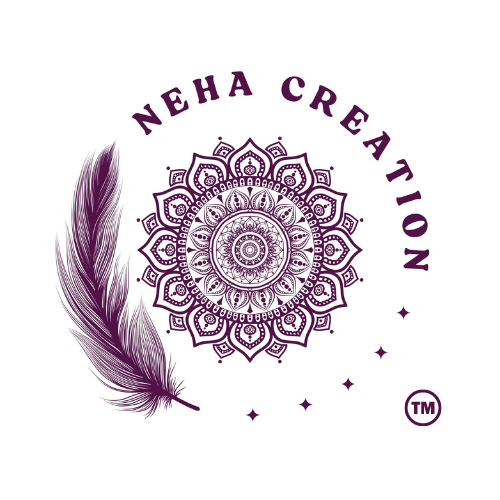In the vast and colorful universe of visual art, each style carries its own soul, history, and expression. But among them, Mandala Art stands out—not merely for its intricate patterns or symmetrical beauty, but for its deep spiritual symbolism, meditative qualities, and universal resonance. While most art forms are a reflection of external expression or emotional states, Mandala Art acts as a bridge—connecting the inner self to the outer world.
So, how is Mandala Art different from other art forms? Let’s explore what sets this ancient yet timeless practice apart, and why it has become a global movement for mindfulness, creativity, and healing.
What Is Mandala Art?
The word mandala comes from the ancient Sanskrit language and means "circle". In essence, a mandala is a geometric design that begins at a center point and expands outward in repetitive, symmetrical patterns. Rooted in Buddhist and Hindu traditions, mandalas were originally used as spiritual symbols representing the universe, divine order, and inner peace.
In contemporary times, Mandala Art has become a popular practice across cultures—not only as a creative outlet but also as a tool for meditation, healing, and self-discovery.
Key Differences Between Mandala Art and Other Art Forms
Here are the most defining ways in which Mandala Art differs from traditional and modern art styles:
1. Spiritual and Meditative Intent
Mandala Art is inherently spiritual. It’s not just about creating something beautiful—each circle, pattern, and dot is a symbolic representation of the universe, consciousness, and divine harmony. Unlike other art forms that often focus on visual storytelling or emotional release, mandalas are used as tools for meditation, mindfulness, and spiritual connection.
2. Structured Symmetry and Sacred Geometry
Most art forms embrace freedom of movement, randomness, and abstract flow. But Mandala Art follows a disciplined, symmetrical format, rooted in sacred geometry. Circles, triangles, and grids are meticulously repeated to create balance and harmony—a reflection of the cosmic order.
Unlike abstract or contemporary art, where chaos can be part of the appeal, mandalas demand precision and order, mimicking the structure of the universe itself.
3. Process Over Perfection
In modern art, the final result often defines the artist's success. In Mandala Art, the process is the purpose. Creating a mandala is a meditative journey—each stroke becomes a breath, each line a mantra. The artist often enters a trance-like state of focus and flow, making it an act of active meditation.
Whether the final piece is preserved or even destroyed (as in Tibetan sand mandalas), the transformation occurs during creation, not after.
4. Symbolism Over Realism
Traditional art often seeks to represent real-world objects, landscapes, or human emotions through brush strokes and colors.Mandala Art on the other hand, is steeped in symbolism. Every shape and motif holds spiritual meaning:
-
Lotus petals represent purity
-
Circles symbolize wholeness and eternity
-
Triangles depict energy flow or transformation
-
Grids represent structure in the spiritual world
It’s not about painting what you see—it’s about revealing what’s within.
5. Universal Yet Personal
One of the most beautiful aspects of Mandala Art is its universal appeal and personal customization. While it follows sacred geometry, the colors, patterns, and intentions behind each mandala are deeply personal. Two people can create vastly different mandalas using the same base structure—each reflecting their inner emotions, spiritual path, or healing journey.
Unlike fine art that may only be accessible to trained artists, mandala creation is inclusive and intuitive, making it a favorite for beginners, therapists, and spiritual seekers alike.
Mandala Art in Modern Life
While other art forms dominate galleries and museums, mandala art has found a home in yoga studios, mental health clinics, educational settings, and personal journals. Here’s how it’s used today:
🌀 Therapy and Healing
Psychologists use mandala coloring and drawing to help patients release trauma, reduce anxiety, and promote relaxation.
🌀 Education and Focus
Teachers use mandalas in classrooms to help children improve concentration, creativity, and emotional balance.
🌀 Spiritual Growth
Spiritual practitioners use mandalas as a visual mantra, supporting deeper meditation, intention setting, and inner clarity.
Why People Are Drawn to Mandala Art
-
✅ It calms the mind
-
✅ It helps process emotions
-
✅ It improves focus and creativity
-
✅ It connects art with purpose
-
✅ It requires no artistic background
Unlike art that relies on external themes, mandala art is inward-looking. It's a mirror of the soul.
Final Thoughts: Mandala Art—A Journey, Not Just a Design
In a world flooded with images, colors, and constant noise, Mandala Art brings us back to center—literally and metaphorically. It isn’t just different from other art forms in technique; it’s different in purpose, intention, and depth. While other art speaks to the eyes and heart, mandalas whisper to the soul.
Whether you're a beginner or an experienced artist, exploring mandala art can be a transformative practice—one that nurtures your mind, body, and spirit. It’s not just about drawing patterns—it’s about creating inner peace, one circle at a time.
🔸 Explore Mandala Art Kits, Online Courses, and DIY Workshops at www.nehascreations.com
🎨 Whether you’re new or experienced, we offer guided tools and designs to help you create, meditate, and grow through the art of mandala.


